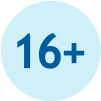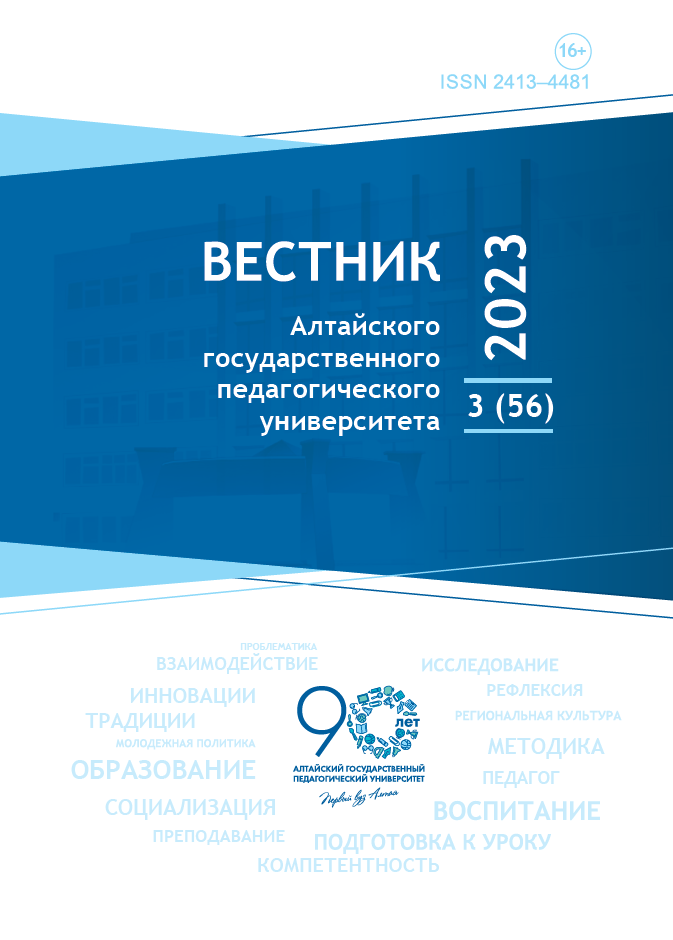

The impact factor of the RSCI is 0,138
ISSN 2413-4481
DOI prefix 10.37386/2413-4481
INFORMATION FOR AUTHORS
Federal State Budget Educational Institution of Higher Education “Altai State Pedagogical University” publishes the scholarly journal
VESTNIK ALTAYSKOGO GOSUDARSTVENNOGO PEDAGOGICHESKOGO UNIVERSITETA
The journal publishes papers presenting results of original research in the areas of Pedagogy, Psychology, and History
Frequency of publication: 4 issues per year (March, June, September, December)
Submitting the Article:
The electronic version of the article is submitted via the author’s personal account available at https://journals-altspu.ru/vestnik.
Journal Submission Requirements
for “Vestnik Altayskogo gosudarstvennogo pedagogicheskogo universiteta”
The journal accepts articles in Russian that have not been previously published or submitted for publication in other editions.
The articles are to be written by one author or a group of no more than three co-authors. The authors are recommended to publish an individually written paper once a year; a second paper by the same author can be published if written in the collaboration with a co-author.
The article should contain at least 15,000 characters and should not exceed 130,000 characters (with spaces), including the list of references, the information about the authors, tables and pictures with captions. The article should be typed on A4 size page, Microsoft Word, Times New Roman 12 type size, single line spacing, width alignment. All margins should be set at 2.0 cm, the first line indentation is 0.8 cm. The file name should be the author’s surname.
If rare fonts are used in the article the authors submit them to the editor in their electronic folder.
Pictures (photographs, drawings, tables, graphs, charts, etc.) are additionally submitted as separate JPEG or TIFF files with at least 300 dpi resolution; the file names should contain the author’s surname and the number of the picture. All pictures in the article should be black and white.
References are given as numbers enclosed in square brackets indicating the serial number of the source and page. If a reference needs to specify several sources, they are given in brackets and separated with a semicolon, for example: [1, p. 25; 3, p. 60].
References to pictures (photographs, figures, tables, graphs, diagrams, etc.) in the text are given in parentheses, for example (Fig. 2, Table 1). In the text of the article where the author plans to post the illustration, a caption is given to it which should contain:
The reference list follows the main text in the order of mentioning or citing in the article. Only one entry can be given under one number. In case of a second reference to the same source, the number that was initially used is indicated in the brackets. Foreign language sources are given in the general list in the order of mentioning. The reference list and in-text references should conform to GOST R 7.0.5-2008 “Bibliography. General requirements and rules”.
Samples of reference entries:
The structure of the article is to conform to the Design Template on the journal web site and should contain:
In the introduction, the author substantiates the relevance, novelty and objective of the study, formulates the problem under study, provides a brief review of the scientific sources on the issue which are essential for understanding the main part of the work, describes the research methods, the data collection and analysis methodology, defines the abbreviations and terms used in the article.
In the main part of the article, it is necessary to cover the principal research propositions and results, scientific facts obtained personally by the author, discovered patterns, connections, tendencies; the author’s personal contribution to the achievement and implementation of the main conclusions, etc. The authors are advised to follow the standards of academic writing in a modern literary language clear to a wide range of readers.
One should not overload the text with quotations; all quotes must be followed by references. The author is responsible for the reliability of the information, accuracy of citation and references to official documents and other sources.
In the conclusion part, it is necessary to formulate conclusions, recommendations, theoretical and practical significance of the results obtained, indicate possible directions for further research.
The articles that do not meet the given requirements are rejected.
The editorial board sends the manuscripts for peer review and accepts them for publishing in case of a positive review. If the peer review is negative, the final decision on publishing the article is made by the editorial board.
The articles are published for free. The manuscripts are not returned to the authors. The edited articles are not sent to the authors.
Authors’ copies are not issued or distributed. The full texts of the articles are posted in the public domain at https://journals-altspu.ru/vestnik.
The decision on accepting an article for publishing is made within three months from the date of manuscript registration in the editorial office. The article is published within 6 months after the decision on its acceptance is made.


The impact factor of the RSCI is 0,138
ISSN 2413-4481
DOI prefix 10.37386/2413-4481